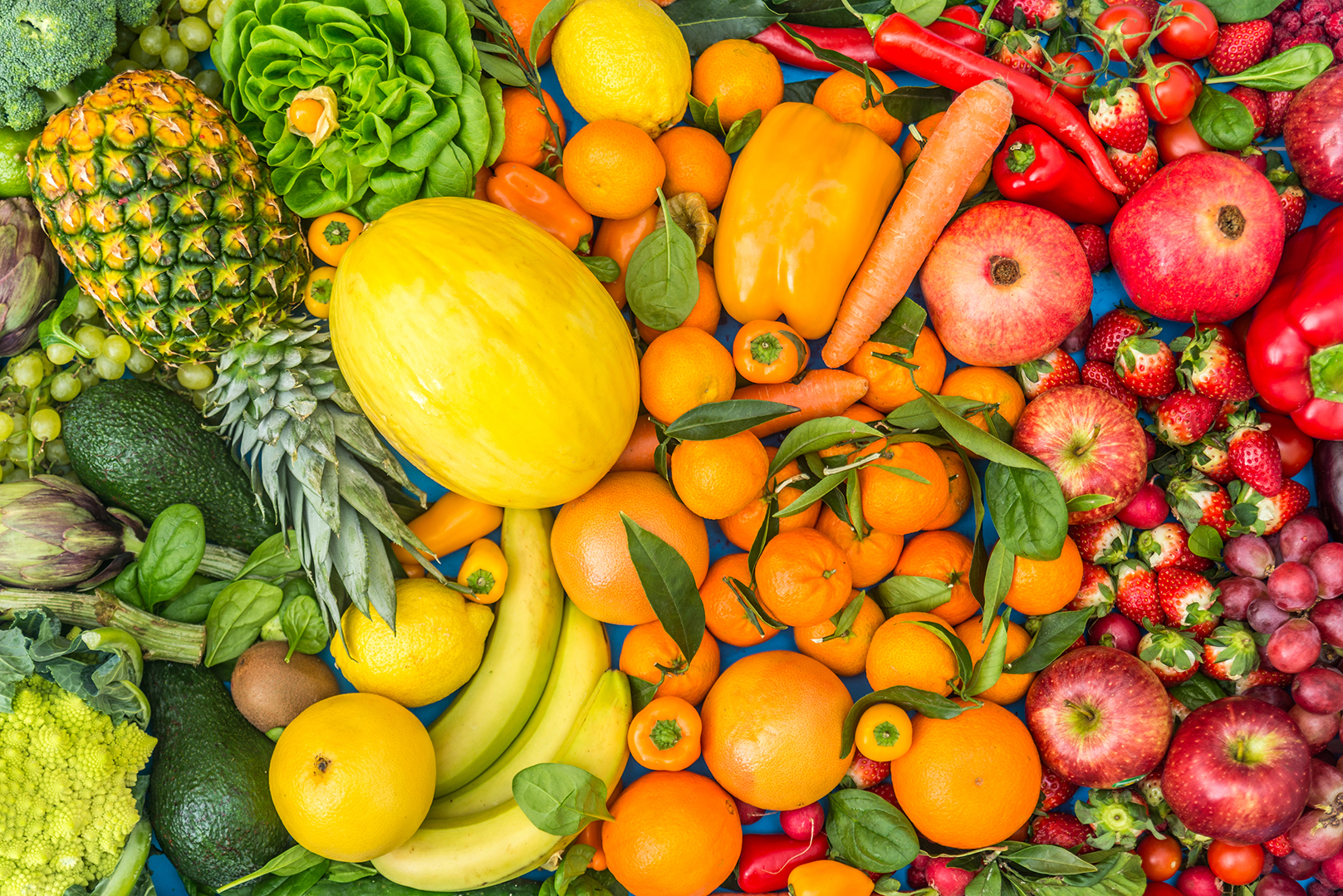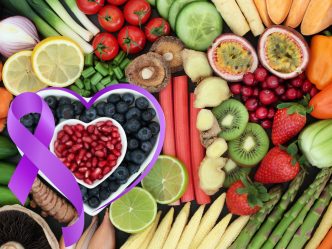How can we prevent as many as one in five cases of cancers?
“It’s easy: Just eat more fruits and vegetables,” said Sarah Deen, dietitian at the Georgia Cancer Center at Augusta University.
A healthy, cancer-fighting diet includes a rainbow of colorful fruits and vegetables. Make sure to add a variety of these “colors” to your shopping cart, courtesy of the Academy of Nutrition and Dietetics:
- Red: Tomatoes, kidney beans, strawberries, raspberries, watermelon, pink grapefruit, cranberries, red apples, red grapes
- Orange: Carrots, sweet potatoes, winter squash, cantaloupe, peaches, mangoes, oranges
- Yellow: Yellow summer squash, corn, pineapple, lemons, turmeric, olive oil
- Light green: Lettuce, celery, zucchini, cucumbers, asparagus, artichokes, limes, green grapes, green apples, kiwi
- Dark green: Cabbage, broccoli, spinach, Brussels sprouts, kale, beet greens, turnip greens, collard greens, many herbs
- Blue and purple: Beets, purple eggplant, purple grapes, blueberries
- White: Onions, garlic, mushrooms, cauliflower, potatoes
- Brown: Cinnamon, nuts, brown rice, whole wheat, other whole grains, flax seed, chocolate, coffee, tea
Phytochemicals in fruits and vegetables — the substance that gives these foods their color, flavor, fiber and texture — can help to fight off cancer-causing free radicals that damage your cells’ DNA. To ensure that you’re eating a balanced diet rich in a variety of colorful plant foods, fill at least half of your plate at every meal with raw or cooked vegetables and fruits, and turn to fruit and vegetables when you need a snack.
Ask a Dietitian
Have more questions about how to fight cancer with food? Contact a Georgia Cancer Center dietitian today at 706-721-0507 or 706-721-0708.





